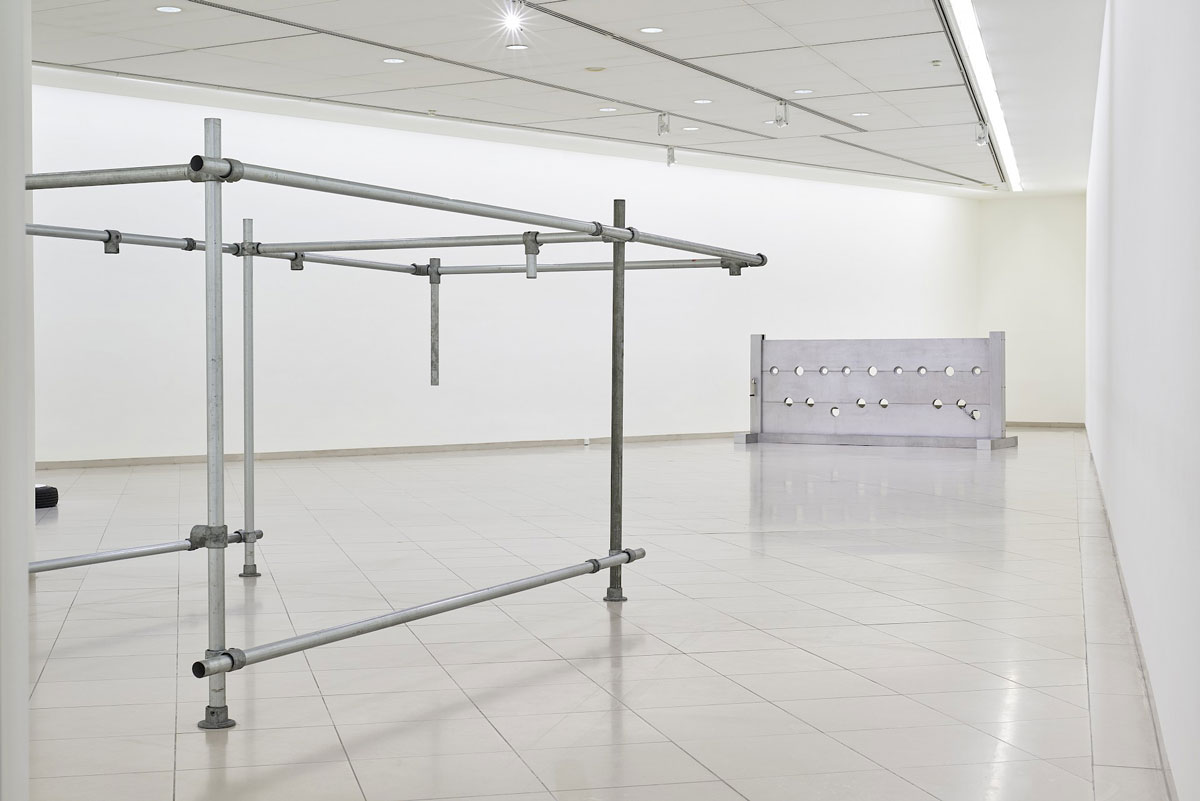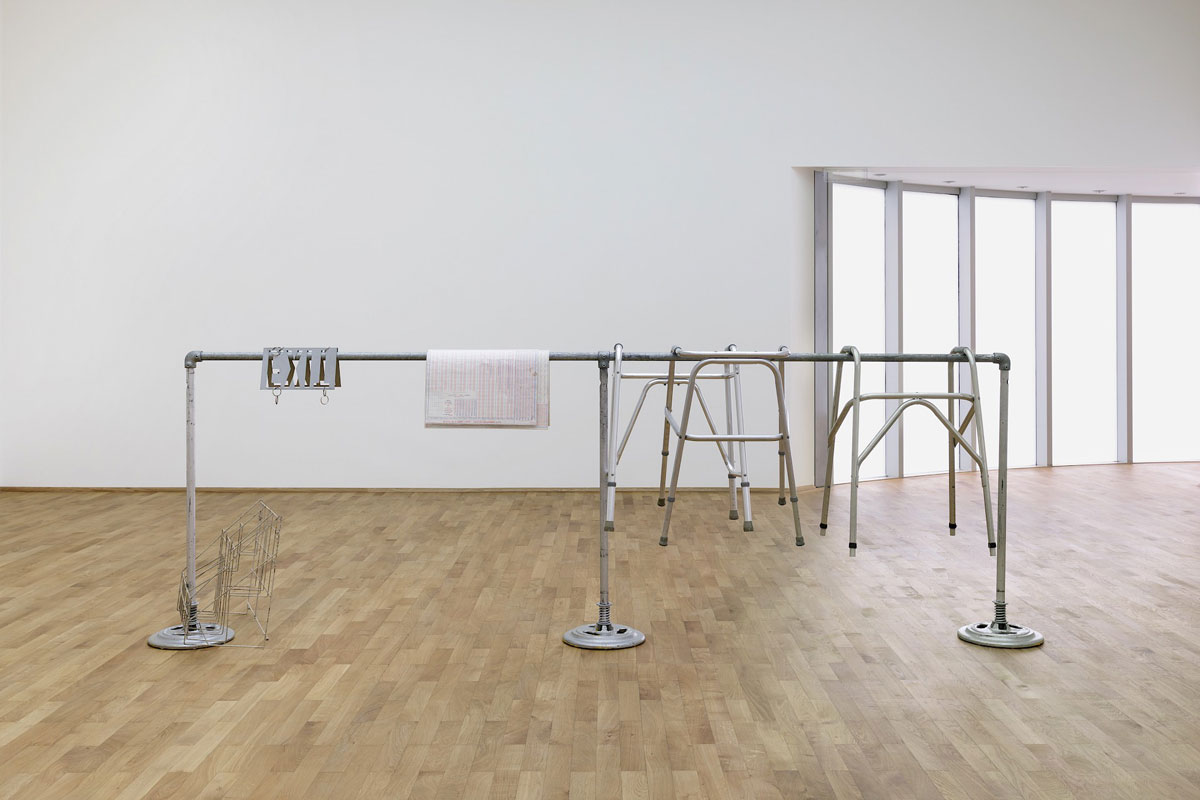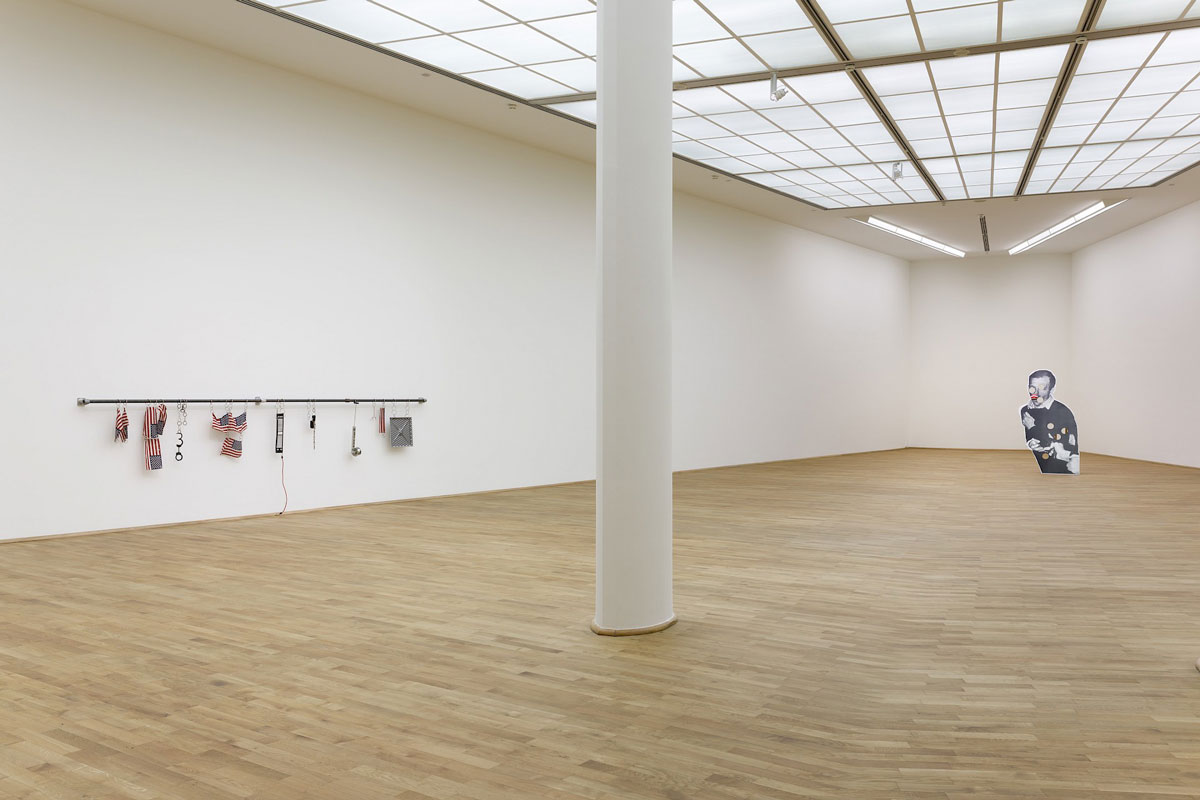ART CITIES: N.York-Cady Noland
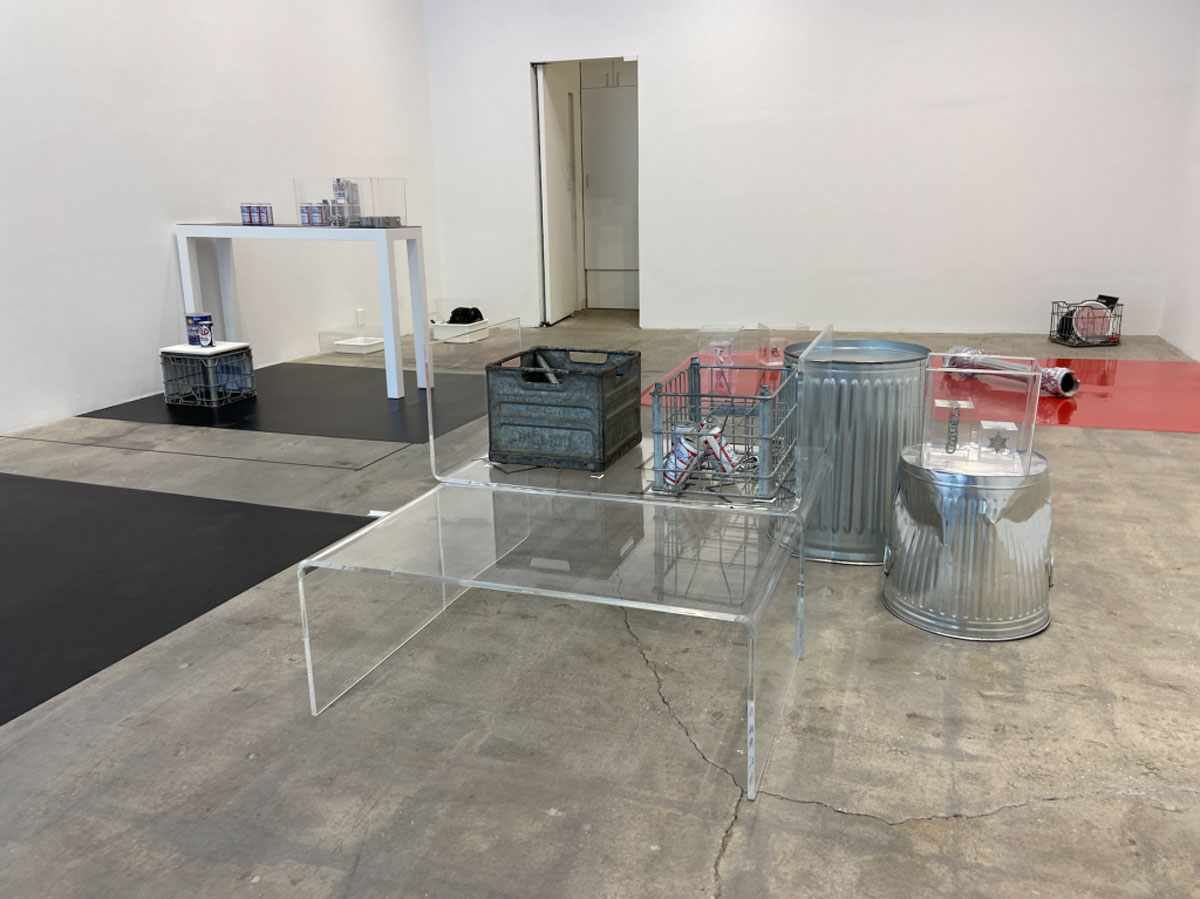 In modernity, violence finds expression not only in social action, but also in omnipresent objects, facilities and urban structures. The severity of the aggression is condensed in both form and material. The geometric austerity suggests functionality; the reflected light of the metallic surfaces creates distance. The shape, shine and hardness of the resistant materials testify to their strength and power, endowing the objects with immediate brutality.
In modernity, violence finds expression not only in social action, but also in omnipresent objects, facilities and urban structures. The severity of the aggression is condensed in both form and material. The geometric austerity suggests functionality; the reflected light of the metallic surfaces creates distance. The shape, shine and hardness of the resistant materials testify to their strength and power, endowing the objects with immediate brutality.
By Dimitris Lempesis
Photo: Gagosian and MMK Archives
An exhibition of works by Cady Noland is on show in Gagosian’s New York Gallery. In her works, Cady Noland uncovers the violence we encounter every day in scenarios of spatial and ideological demarcation. She thus exposes the alleged neutrality of material and form. The supposedly clear distinction between objects and subjects becomes blurred, the unceasing interaction between them evident. Cady Noland was born in 1956 in Washington, D.C., the daughter of painter Kenneth Noland. After earning a BA from Sarah Lawrence College in Bronxville, New York, she settled in Manhattan. She began to create artworks with found objects in 1983 and had her first solo exhibition five years later at White Columns in New York. Her collages, sculptures, and mixed-media installations examine the underbelly of the American psyche, specifically our fascination with celebrities, violence, and psychopathological behavior. Her aesthetic vocabulary integrates strategies historically associated with Pop art, Minimalism, and Post-Minimalism, with its specific antecedents in the anti-form and scatter sculpture of the late 1960s. Noland’s early work incorporates press photographs, newspaper copy, and advertisements. “Guns” (1986–87) is a black-and-white photocopied image of a pistol leaning against a can of Diet Pepsi riddled with bullet holes. A collage of images along the right edge offers instructions on how to reload the weapon. Firearms also figure in Noland’s series of cowboy sculptures. “Cowboy Blank With Showboat Costume” (1990) presents the silhouetted aluminum cutout of a cowboy punctured by four holes. He crouches and discharges his weapon toward the viewer, while sporting a delicate bow tie around his hat as well as an ostrich plume and bandanna in his belt. Injured and feminized, disabled by gunfire, Noland’s cowboys are impotent. The artist addressed the same theme in Saw Action/Duty (1986), an orthopedic walker draped with police equipment. In the late 1980s Noland began a series of sculptures and installations examining the masculine underpinnings of the American dream, embodied in men’s beer consumption. “Crate of Beer” (1989) is a wire-mesh basket full of empty Budweiser cans. In her 1989 untitled installation at the Mattress Factory in Pittsburgh, Noland stacked six-packs of Budweiser atop one another. Metal scaffolding transformed these mountains of alcohol into a construction site. For the artist, Bud cans are as potent an American symbol as Old Glory, both being red, white, and blue. Flags, too, populate Noland’s work. In “The American Trip” (1988), “Cheap and Fast” (1989), and related works, the flag is draped or hung, limp or pierced, like Noland’s cowboys. Also in the late 1980s, Noland delved deeper into the disturbed American psyche and focused on the public’s prurient interest in violence, a phenomenon exemplified in the media’s transformation of criminals into celebrities. For Noland, such a perverted process is symptomatic of the compulsion in American culture to objectify individuals for purposes of entertainment. “Tanya as a Bandit” (1989) and “Untitled Patty Hearst” (1989) address this phenomenon. “Tanya as a Bandit” shows an enlarged version of the staged photograph with which Patty Hearst publicly announced her affiliation with the SLA. The photo caused a media sensation in 1974, as Hearst, the granddaughter of William Randolph Hearst, despite being kidnapped by the SLA, joined the group as “Tanya” during the course of her captivity. Hearst named herself after Tamara Bunke, an East - German guerilla fighter and comrade of Che Guevara. Hearst, the cobra symbol, and another weapon are cut out, as if the aluminum plate still represented the original newsprint. The news report in which Hearst is described as “NOW A SUSPECT” after having fired her weapon wildly following the failed robbery of a sporting goods store in Los Angeles on May 16, 1974, serves as a kind of base for the image. Noland believes the male psychopath is the ultimate example of Americans’ tendency to manipulate and objectify one another. She explored this notion in a series of sculptures devoted to Charles Manson. In “Mr. SIR” (1993), silkscreen on aluminum, the man who sanctioned the murder of actress Sharon Tate cuts an enigmatic figure. “Not Yet Titled (Bald Manson Girls Sit-In Demonstration)” (1993–94) represents female members of Manson’s “family” seated in the street in protest during his trial. Noland incorporated the wire copy that accompanied the original press photograph into the work. In recent years, Noland has forsaken mass-media imagery in favor of a more sculptural vocabulary. “Beltway Terror” (1993–94) is a square of wood covered in smooth aluminum with five neat holes, resembling a pillory. “Untitled” (1999) consists of a piece of plywood supported by a set of white plastic barricades as used by police. While both works echo Minimalist geometric formalism, they also continue Noland’s exploration of the dysfunction of American culture in their allusion to torture, public humiliation, and physical confinement.
Photo: Cady Noland, Installation view, 2023, Gagosian Gallery-New York, Courtesy Gagosian
Info: Gagosian Gallery, 821 Park Avenue, New York, NY, USA, Duration: 12/9-21/10/2023, Days & Hours: Tue-Sat 10:00-18:00, https://gagosian.com/
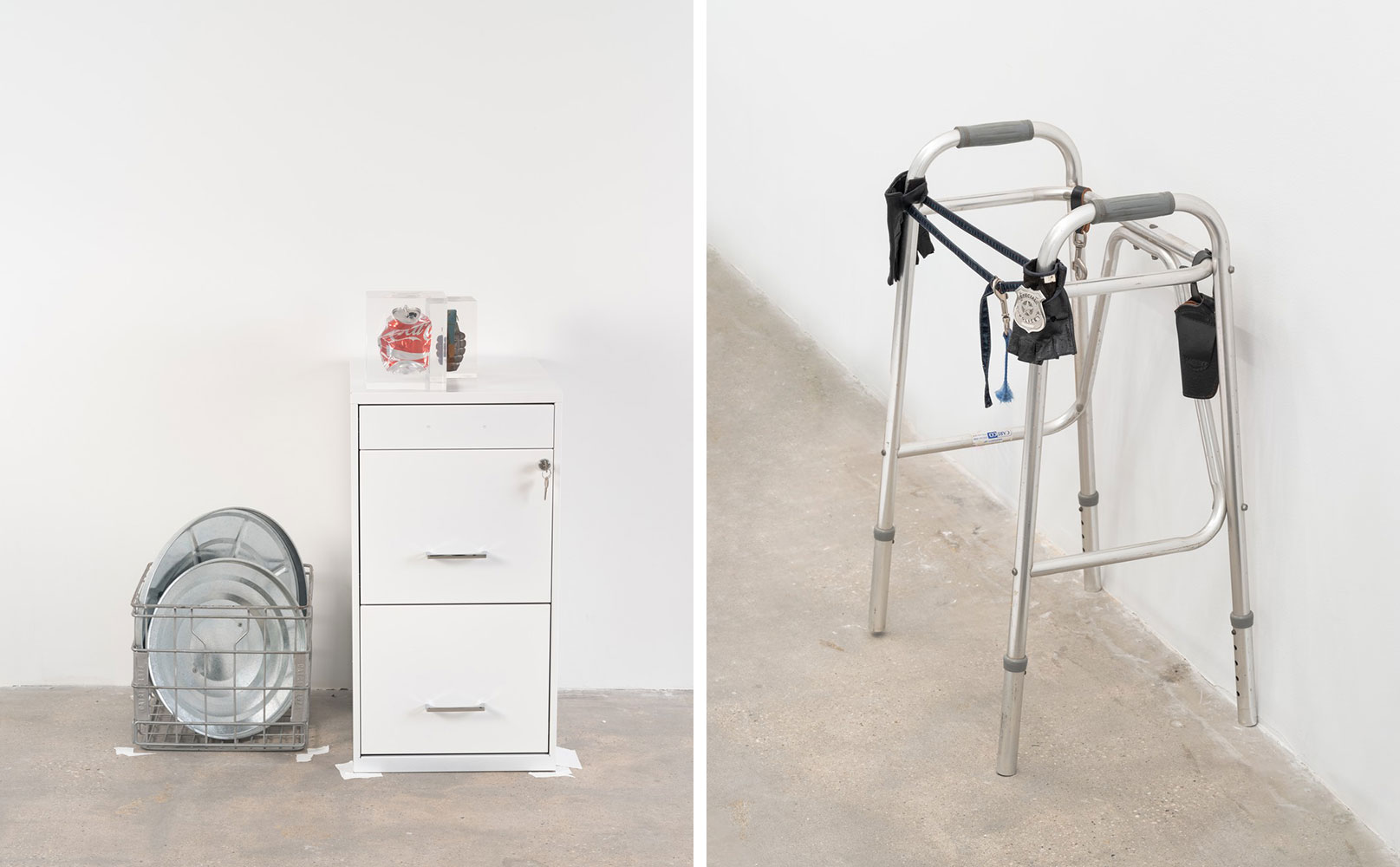
Right: Cady Noland, untitled, 1986 Metal walker, metal police badge, leather gloves and case, denim strap, leather strap with metal clip, and nylon strap with metal clip, 32 × 30 × 24 inches (81.3 × 76.2 × 61 cm), © Cady Noland. Photo: Owen Conway, Courtesy the artist and Gagosian
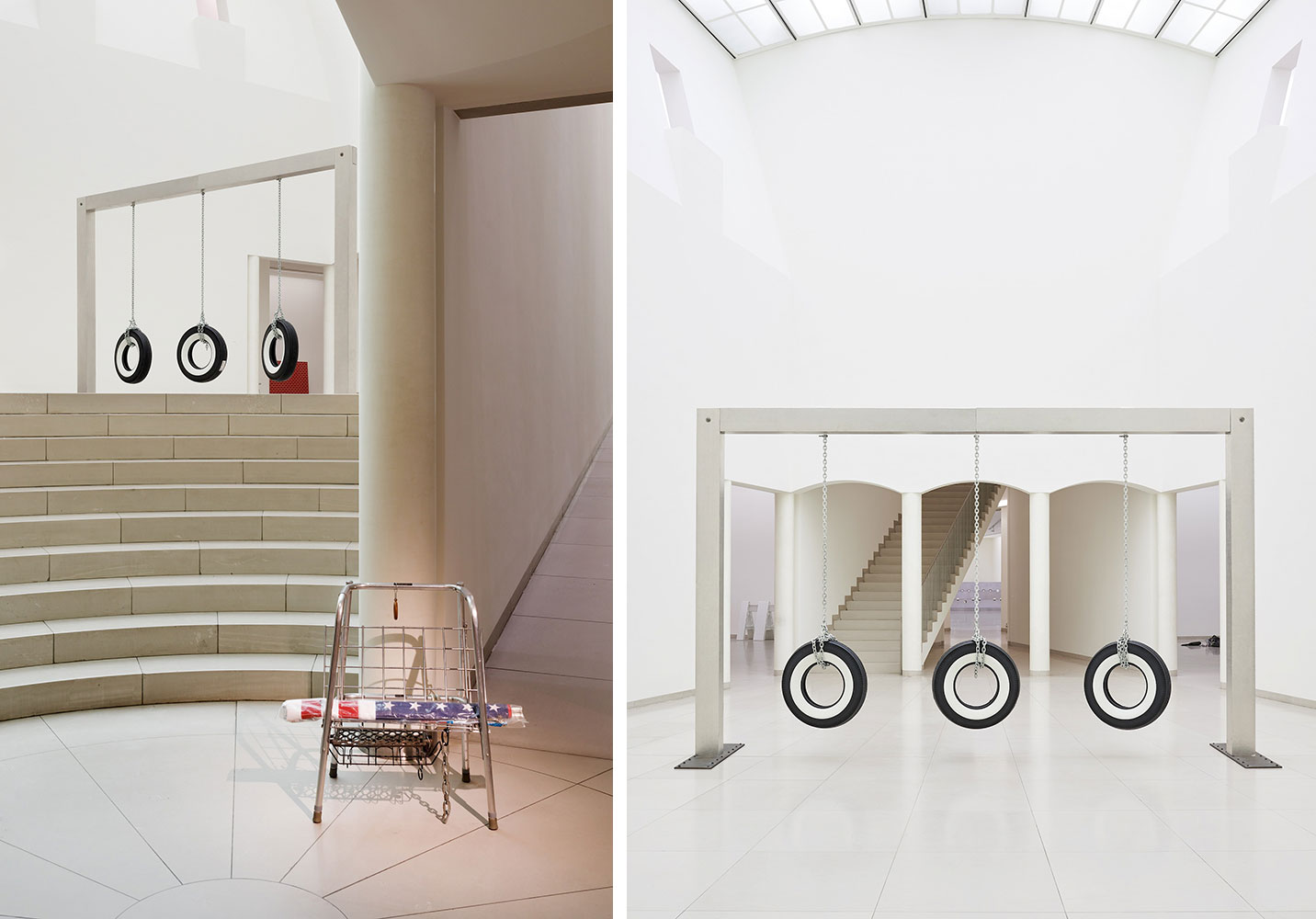
Right: Cady Noland, Publyck Sculpture, 1994, Glenstone Museum, Potomac, Maryland, Installation view MUSEUM MMK FÜR MODERNE KUNST, photo: Fabian Frinzel
